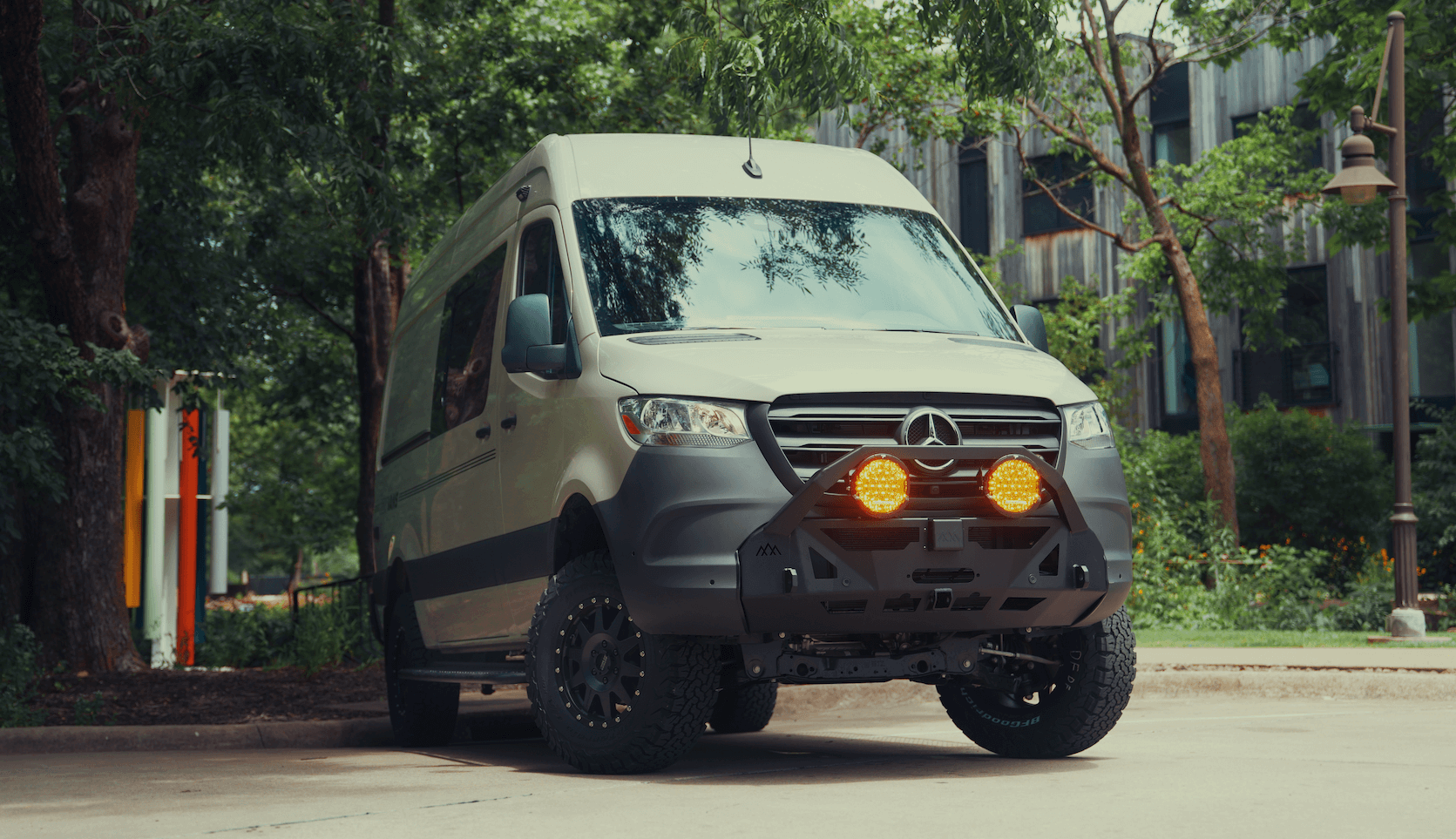Recreational Vans

Portable cans carry vital reserves for off grid miles, remote detours, and snowbound trail exits. A solid mount keeps fuel outside the cabin, away from heat sources and living space. Good hardware also prevents can abrasion, lid loosening, and strap creep. The goal is simple: store liquid weight where the structure can handle it, keep it accessible for refuel stops, and ensure it stays quiet and planted when the road gets rutted.
Cradle style mounts wrap the can with a formed frame and locking strap. They spread load across the can faces, resist shake, and make quick checks easy. Brackets are lighter and simpler, but rely more on strap tension and exact fitment to stop rattle. For long washboard stretches, cradles typically hold adjustment longer.
Flat plates bolt to racks, swing arms, or door structures and accept adapters for different can shapes. Modular systems shine when a build changes over time, letting you swap fuel for water, rotate orientation, or add secondary tie points. Look for anti rotation tabs and formed lips that stop creep under vibration.
Powder coated steel brings high stiffness and longevity if the finish remains intact. Aluminum resists corrosion and saves weight but needs proper section thickness and gussets for off road use. Stainless fasteners with Nylock nuts or thread locker prevent loosening. Use large diameter washers or backing plates to spread force over thin sheet metal.
Swing arms keep weight low and behind the axle, which preserves handling. They also open independently for easy fueling. Reinforced door carriers are convenient but must tie into internal bracing, not just skin. Aim for a mount height that avoids taillight blockage and keeps nozzles reachable without climbing.
Roof mounts free up rear space but raise center of gravity and complicate fueling. If the can goes overhead, pack no more than necessary and use positive retention straps plus a secondary tether. Side ladder carriers keep the can accessible and off paint, provided the ladder is rated for dynamic loads. Bed rail and headache rack mounts suit pickups, placing weight forward and low while protecting the cab.
Hitch platforms handle heavy loads well but extend overall length and departure angle. Bumper integrated mounts are tidy when the bumper is frame tied and boxed. Whenever possible, use through bolts into steel structure, not self tapping screws in body panels.
Dry fit with full cans and verify door swing, ladder steps, and camera sightlines. Use class rated bolts, quality washers, and torque to spec. Paint or apply anti seize as appropriate to prevent galling. Recheck torque after the first shakedown trip.
Modern cans rely on seals and venting systems designed for slosh and heat expansion. Inspect caps and gaskets, and store nozzles stowed and clean. Keep cans upright, avoid placing near exhaust exits, and add drip trays if the mount sits above paint or lighting.
Fuel weighs roughly six pounds per gallon. Two full cans can shift handling if placed high or far aft. Balance left and right sides, limit roof fuel, and only carry what your route demands. For desert crossings or winter detours, pre plan refill points to avoid unnecessary weight.
Regulations vary by state and country. Common rules include caps with seals, vapor control, and visible lighting and plate. Keep cans clearly marked and never mix water and fuel containers. Pack absorbent pads and a sealable bag to contain any accidental drips. Dispose of contaminated soil at proper facilities, not trailside.
Replace mounts if you see cracked welds, elongated holes, or permanent strap stretch. Retire cans with dented corners, swelling, or hardened seals. If your travel shifts from pavement to rough trails, move from light brackets to reinforced cradles with lock points and backing plates.
The cleanest jerry can mounts feel invisible day to day and indispensable when you need them. They sit low, lock tight, and integrate with ladders, swing arms, and racks without complicating doors or cameras. If you are building a trip ready van, mount selection and placement are as important as tire choice and suspension settings.
OZK Customs designs vehicles around real routes, not showroom floors. Our team integrates jerry can mounts into complete upfits with proper structure, corrosion protection, and service access. Explore our Recreational vans, see how we approach layout and hardware in Custom van builds, and browse finance friendly options on Mainstream vans. Tell us your fuel range, terrain, and gear load, and we will build a system that stays quiet, safe, and ready for long miles.
You bring the route plan, we bring the engineering. From structural tie ins to clean wiring and lighting around rear carriers, we build mounts that perform without drama. Share your goals and let OZK Customs craft a secure, durable solution that fits your van and your travel style.
Ready to add secure, road tested fuel storage to your build? OZK Customs designs and installs jerry can mounts as part of complete or partial upfits, with clean fabrication and proper load paths. Tell us where you travel and how far you go, and we will engineer a safe, durable solution. Start your custom van project now.
ADDRESS:
6159 E Huntsville Rd, Fayetteville, AR 72701
PHONE:
(479) 326-9200
EMAIL:
info@ozkvans.com